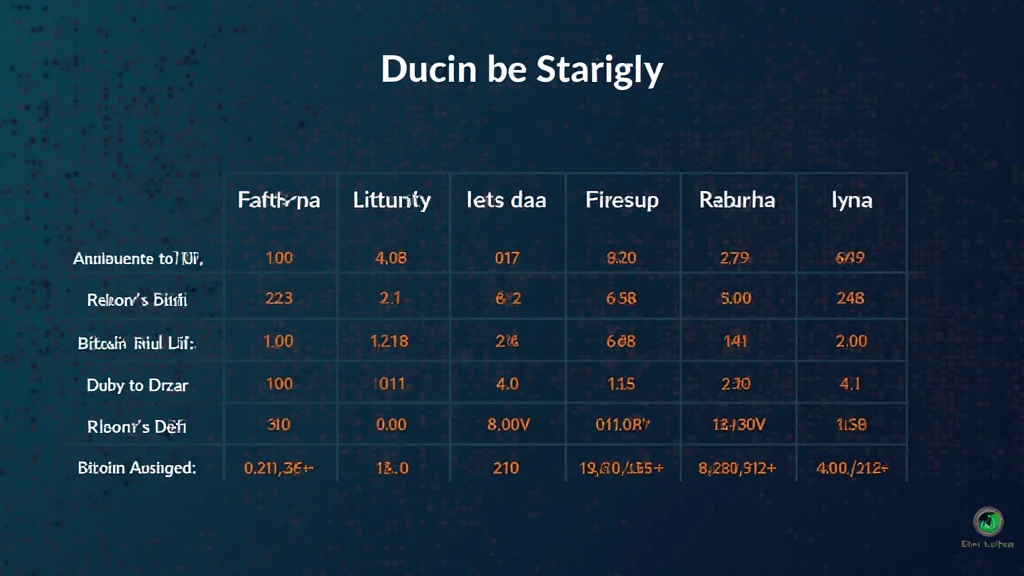Bitcoin DeFi Protocol Vulnerabilities: A Vital Analysis for 2025
With $4.1 billion lost to DeFi hacks in 2024, it’s essential to dive into the vulnerabilities of Bitcoin DeFi protocols as we navigate the complexities of the crypto landscape. Understanding these vulnerabilities not only helps protect individual investments but also fortifies the entire ecosystem.
The Current State of Bitcoin DeFi
Bitcoin is often seen as the first and foremost cryptocurrency, but as decentralized finance (DeFi) continues to evolve, its integration into smart contracts and decentralized applications increases. However, this integration has also highlighted several security weaknesses:
- Smart contract bugs
- Flash loan attacks
- Oracle manipulation
- Governance risks
Understanding Smart Contract Vulnerabilities
Smart contracts act like automatic execution codes for transactions. However, similar to a bank vault for digital assets, these contracts can have serious vulnerabilities:

- Reentrancy Attacks: This occurs when a smart contract calls an external contract that makes further calls back to the original contract.
- Integer Overflow and Underflow: Malicious actors can exploit these flaws to manipulate token values.
- Improper Access Control: Faulty design can grant unauthorized access to sensitive functions.
Flash Loan Attacks in Detail
Flash loans allow users to borrow large sums without collateral as long as the loan is paid back within the same transaction. These loans have been pivotal in exploitative attacks:
- Example: In the infamous 2020 attack on the bZx protocol, attackers took advantage of a flash loan to manipulate market prices significantly.
- Impact: Like a house of cards, the system collapsed due to inadequate collateralization.
Oracle Manipulation: A Growing Concern
Oracles provide real-world data to smart contracts. However, tampering with oracles can lead to catastrophic effects:
- Example: In 2022, the Compound protocol suffered significant losses due to manipulated price feeds.
- Solution: Implementing decentralized oracles can mitigate the risk, but they are not foolproof.
Addressing Vulnerabilities: The Importance of Auditing
In the evolving landscape of Bitcoin DeFi and its vulnerabilities, thorough auditing is paramount:
- Regular Code Reviews: Engage highly skilled auditors to perform regular checks.
- Tools: Utilize tools like Mythril and Slither to automate some aspects of the auditing process.
- Involve the Community: Encourage open-source contributions to identify weaknesses.
Case Studies: Successful Auditing Practices
Many projects have effectively managed to mitigate risks through diligent auditing practices. Here are two examples:
- ChainSafe Systems: Their work with multiple DeFi projects provided robust security while iterating on code.
- HackerOne: This platform helps drive bug bounty programs, inviting experts to uncover vulnerabilities.
The Vietnamese Market: A Focus on User Growth
Vietnam’s crypto landscape is booming, with a growth rate of 320% in new blockchain users in 2024. As this market grows, understanding Bitcoin DeFi protocol vulnerabilities becomes increasingly crucial:
- Education: Efforts must be made to educate users on security practices.
- Community Engagement: Foster a culture of security in blockchain communities.
Local Regulatory Framework
As DeFi projects rise in Vietnam, understanding the regulatory environment is key:
- Investors need to be informed about local compliance guidelines.
- Maintaining communication with authorities is necessary to ensure practices align.
Future Considerations: Building Around Vulnerabilities
As we head into 2025, addressing the vulnerabilities inherent in Bitcoin DeFi protocols must be a priority:
- Innovation without adequate security measures can lead to exploitation.
- Tools like Ledger Nano X can enhance user protection, reducing potential hacks by up to 70%.
The Role of Governance
Governance mechanisms also play a significant role in the vulnerabilities of DeFi projects:
- Decentralized Autonomous Organizations (DAOs) often face challenges due to centralization.
- Regular updates can improve community trust and security.
Conclusion: Navigating Vulnerabilities with Security in Mind
As the Bitcoin DeFi landscape evolves, being aware of its vulnerabilities is critical. Whether navigating smart contracts or ensuring transparency in governance, constant vigilance is necessary. The community must prioritize security as we strive for a more robust DeFi ecosystem. By taking lessons from the past and adapting strategies accordingly, we can build a future where Bitcoin DeFi protocols are more resilient against vulnerabilities. Remember to stay informed and keep abreast of emerging trends and best practices.
For more detailed information on Bitcoin DeFi protocol vulnerabilities, visit btctokenio, your trusted source for cryptocurrency insights.
— Dr. John Segar, a renowned blockchain security expert, published over 40 papers in blockchain technology and has led audits for various high-profile projects.





